Our Blog - Chateau Kergroadès, Brélès, France
The Kergroadès family was in this area from the 14th century and had a house built nearby. François III of the Kergroadès family was a supporter of King Henri IV and, in 1598, he was made a marquis (and his land then known as a marquisate). With this major promotion in status, he needed a much bigger and more impressive home. It took a bit over 10 years to build this massive castle (1602-1613) and even though there was peace in France at that time, the castle was built with a defensive system.
It remained in the same family until 1759, when the last member of the house of Kergroadès died. It then passed to a distant relative of the Kergroadès family and then put up for sale in 1789. Before it was sold, the French Revolution happened, and it remained mostly unfurnished. The Marquis who owned it was guillotined in 1794 and his widow died in 1797, when the French government took it. When the descendants of the prior owners got the castle back in 1809, it was in ruins. It was sold again in 1860 and a restoration project was started in 1910. Here is where the story got a little bit interesting.
The restoration of the roof was done too quickly and it leaked, and it continued to leak. In 1992, the family finally got tired of the leaky roof and decided to sell the castle to a Polish art dealer who planned to turn it into an art gallery. He restored 6 rooms but when it rained heavily, the water would drip on the paintings and he abandoned his art gallery project and sold the castle again in 2000 to a family with origins from the local area. The castle today is privately owned and they do guided tours of the castle, as well as being rentable as an event space.
The castle is one of the largest in Brittany and is built mainly from Aber granite, which is supposedly one of the best granites in France. The pedestal of the Luxor Obelisk in the Place de la Concorde in Paris is made of five blocks of this same granite from the quarries of Aber-Ildut.
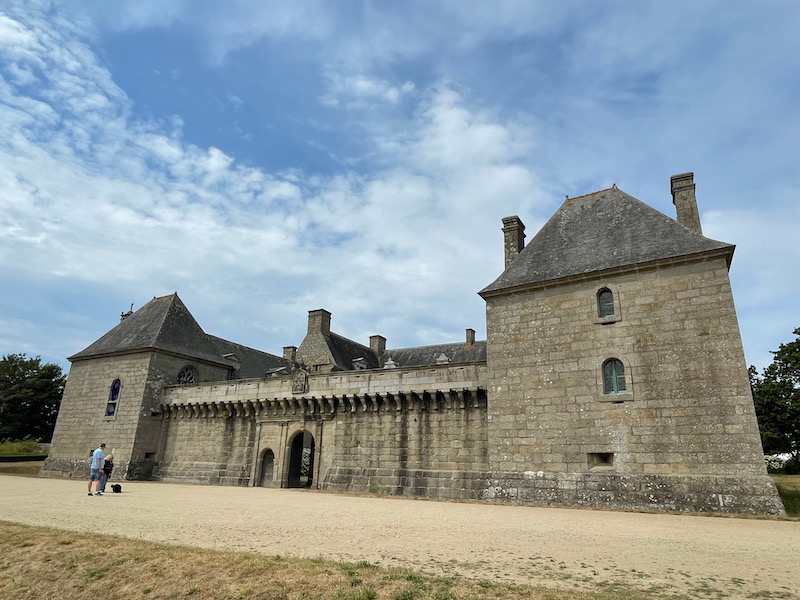
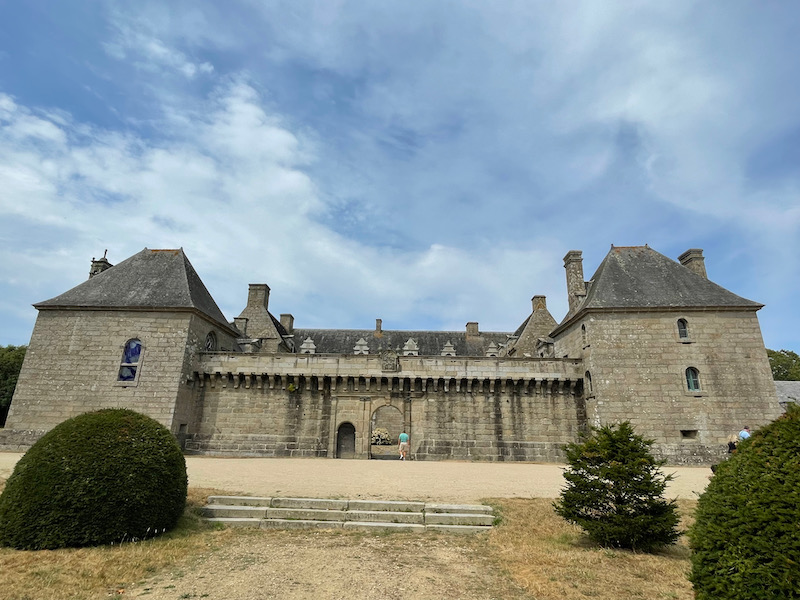
The coat of arms also has an interesting story. In 1860, the new owner of the castle ruins removed the coat of arms and installed it in the garden of his house in the town of Saint-Renan. When he died, the property was given to the town to build a hospital and this coat of arms stayed in the garden of the hospital until 2005 when it was moved back here.
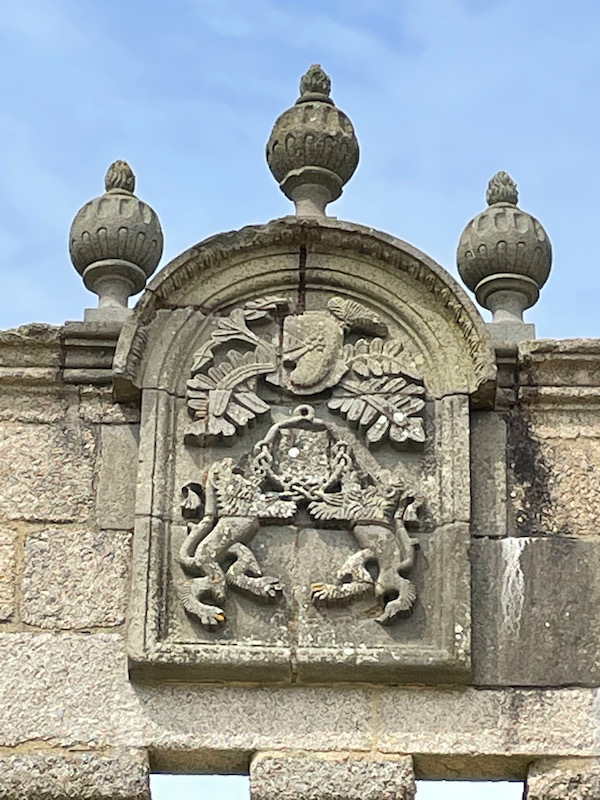
Heading into the courtyard, you can see the the nice mullion windows and a somewhat asymmetrical design. The well that is in the courtyard was very important and as you go through my other blog entries, you will see lots of wells in the courtyards of fortified castles. The design of the well also shows the importance of the family. At that time, the number of columns tell the guests how important the family is. In this case, there are 4 columns which tells everyone that this castle belongs to a Marquis. If there are 2 columns, it is owned by a knight, 3 columns indicates a Baron, 5 for an Earl, and 6 for a Duke.
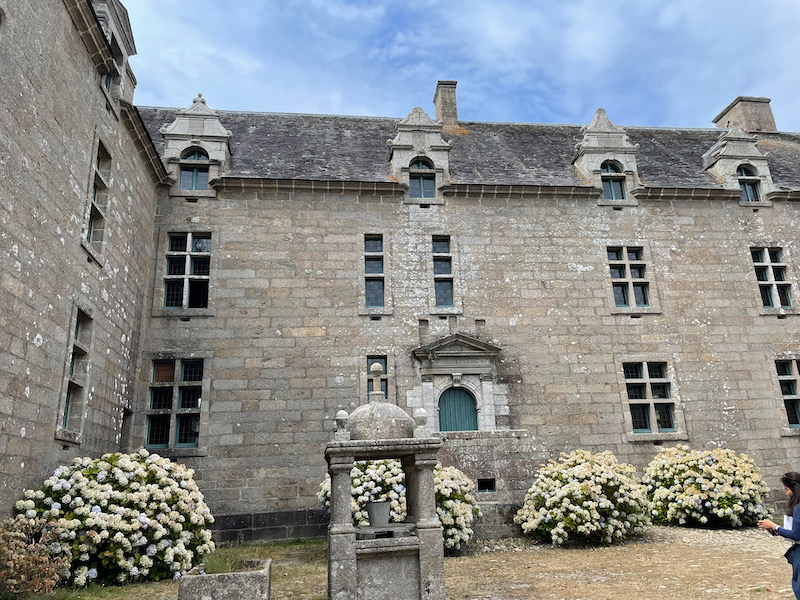
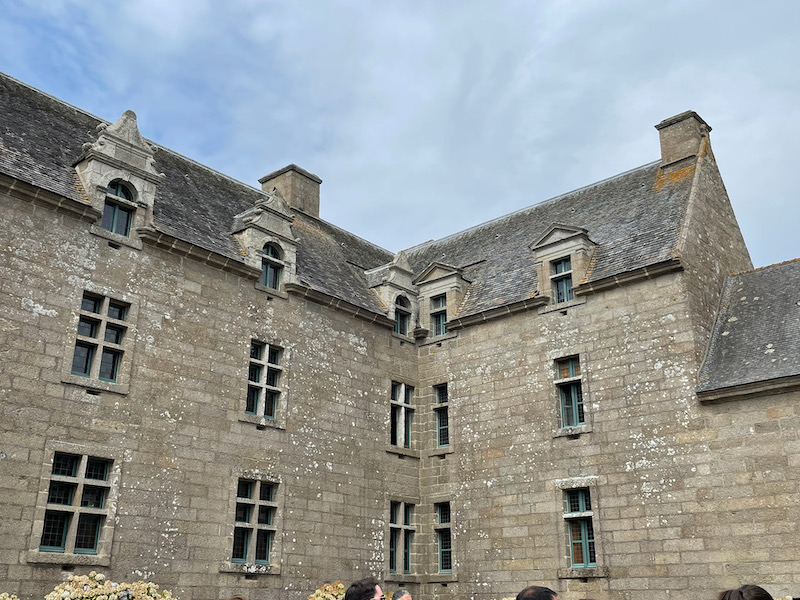
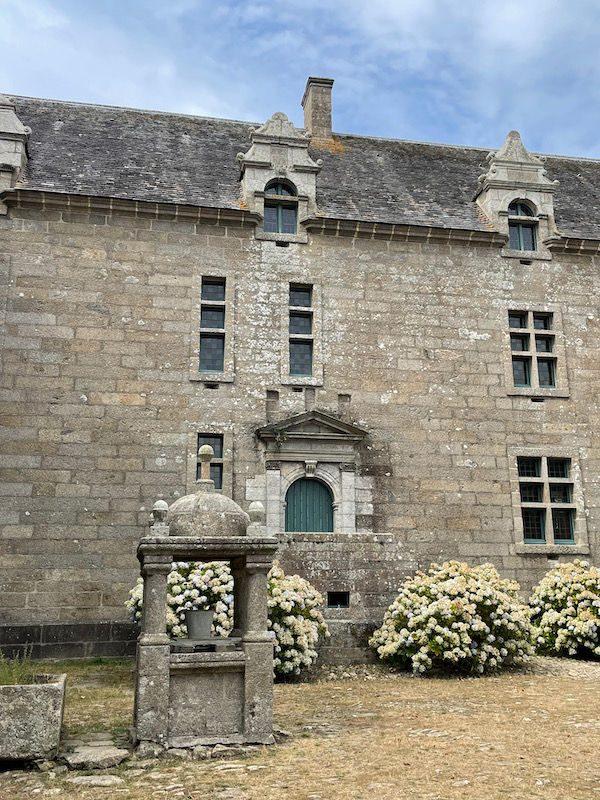
The ground floor is where the Marquis would receive people that were his subjects (so lived within the area that he was the lord over). This first room is the council room, where you can admire the nice wood beam ceiling and large fireplace.
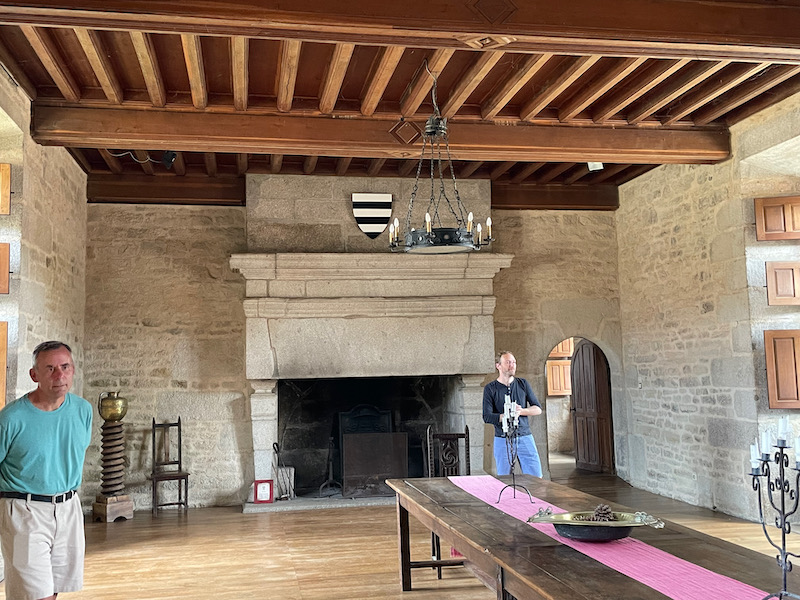
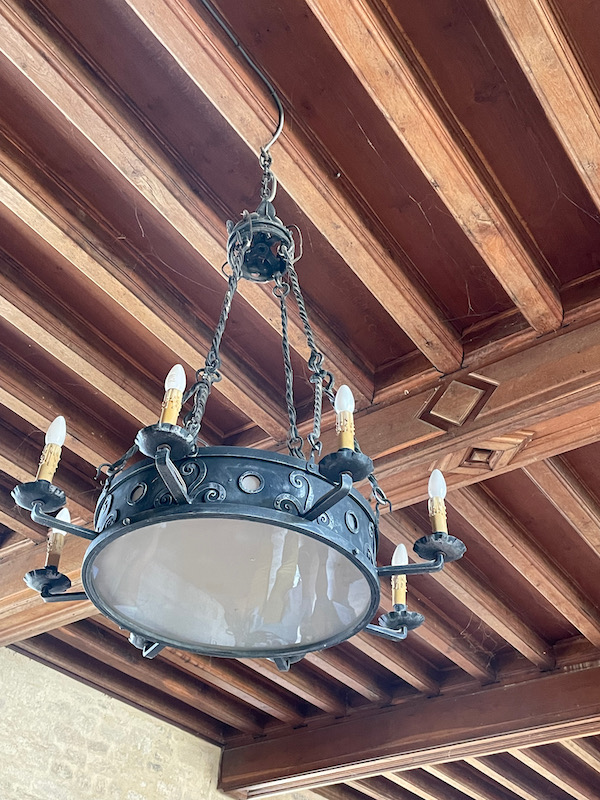
The charter room is just off of the council room and is made entirely of granite. The purpose of the room was to protect the Marquis' most precious items. This was not gold or silver, or even precious jewelry ... but property titles that would be stored in the little wooden slots.
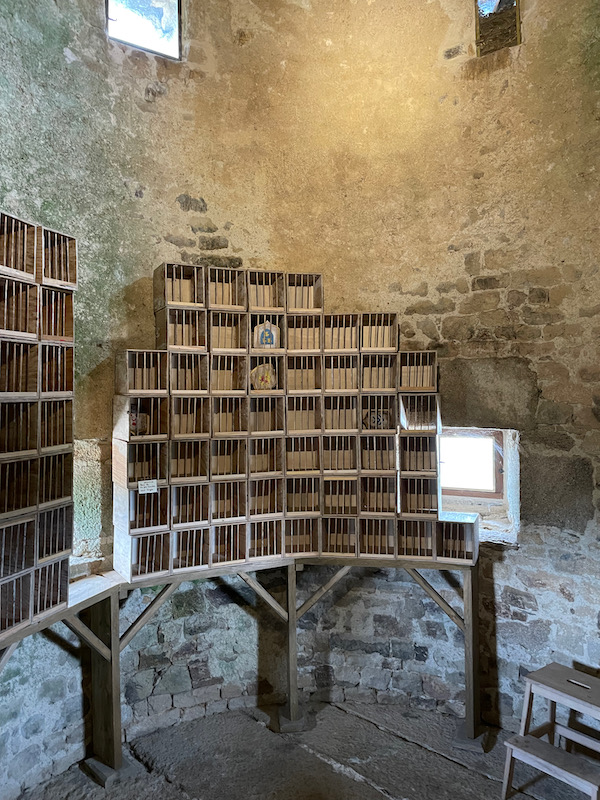
I wanted to show this ceiling, which was redone exactly as it would have been built, so not a single nail! Instead, you can see the wooden pegs that would connect the beams together.
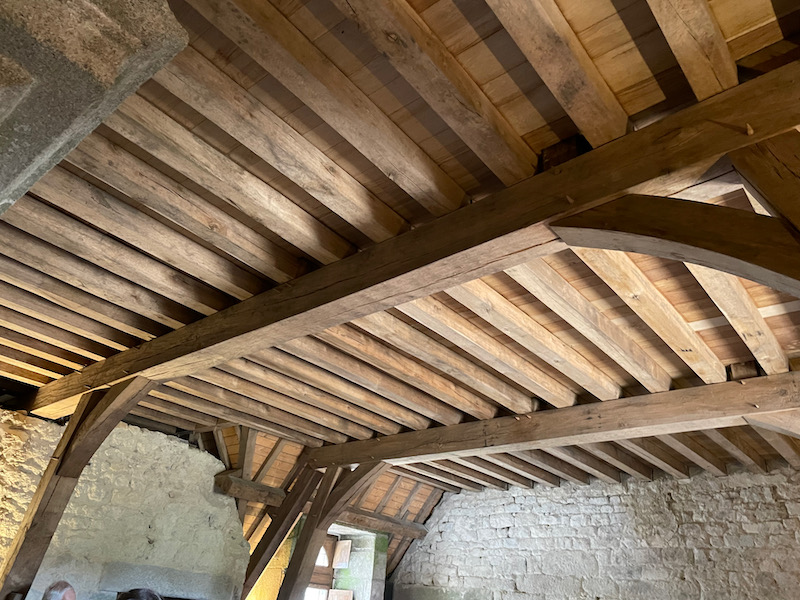
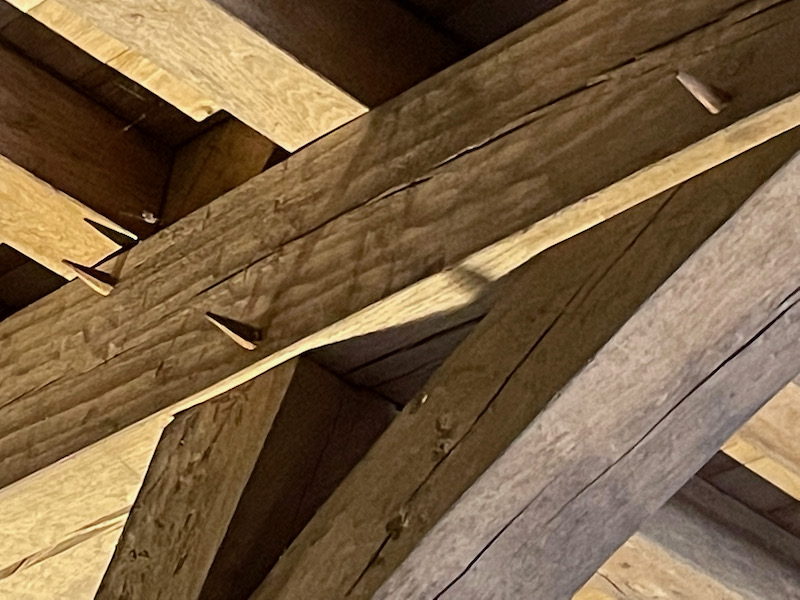
Unfortunately, there was work being done at the time we visited and so we weren't able to visit the other rooms, nor the chapel. Perhaps next time we are nearby, we can check to see if those rooms can be visited again.